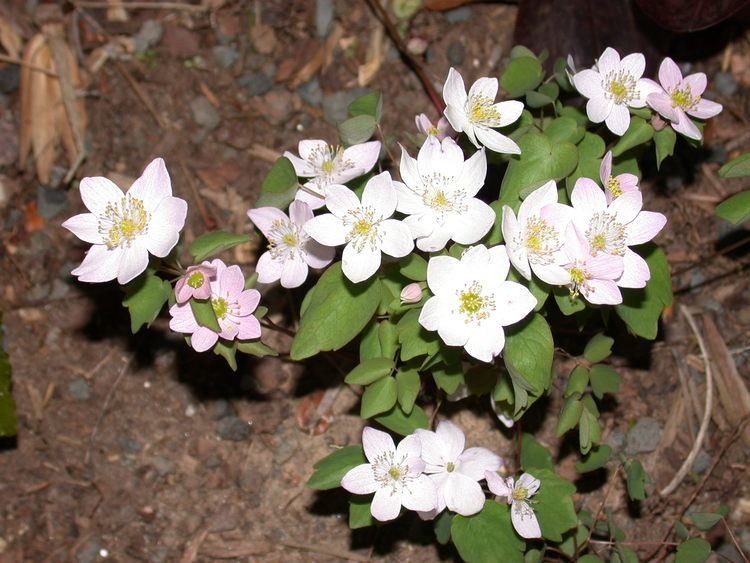Rank Species | Genus Thalictrum Higher classification Thalictrum | |
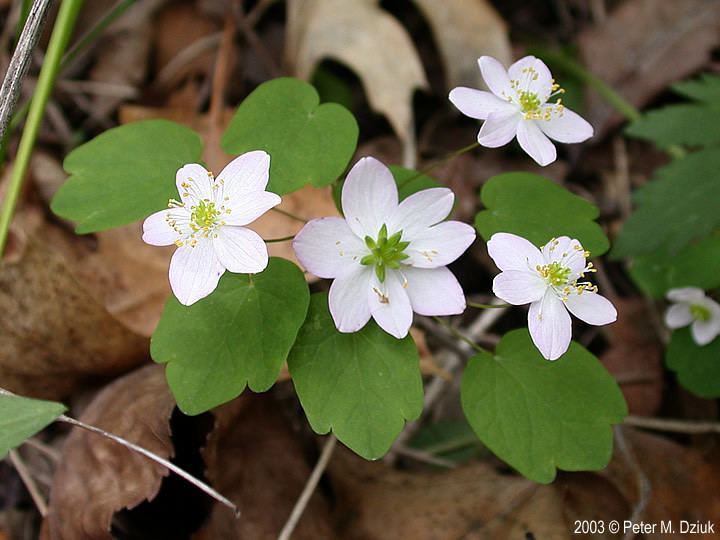 | ||
Similar Thalictrum, Enemion biternatum, Uvularia, Dicentra cucullaria, Ranunculaceae | ||
Plant portrait rue anemone thalictrum thalictroides
Thalictrum thalictroides or Anemonella thalictroides, the rue anemone, is a herbaceous perennial native to woodland in eastern North America. It has white or pink flowers surrounded by a whorl of leaflets and blooms in spring.
Contents
- Plant portrait rue anemone thalictrum thalictroides
- Rue anemone thalictrum thalictroides
- Description
- Taxonomy
- References
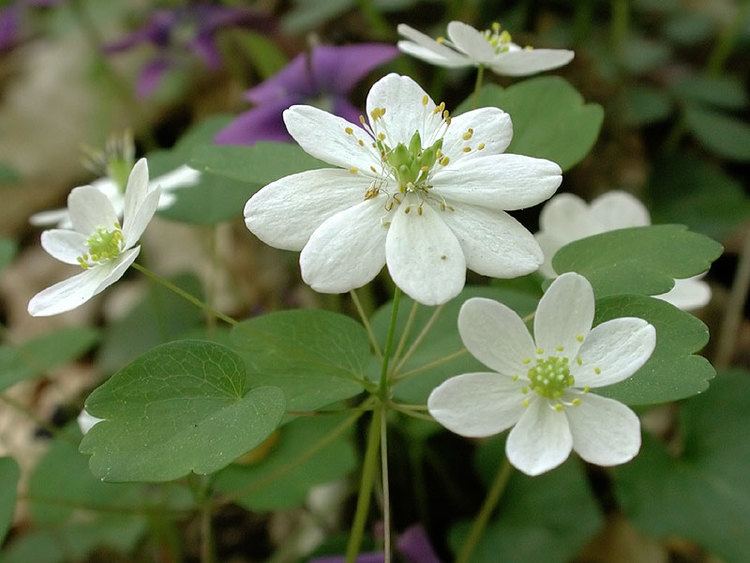
Rue anemone thalictrum thalictroides
Description
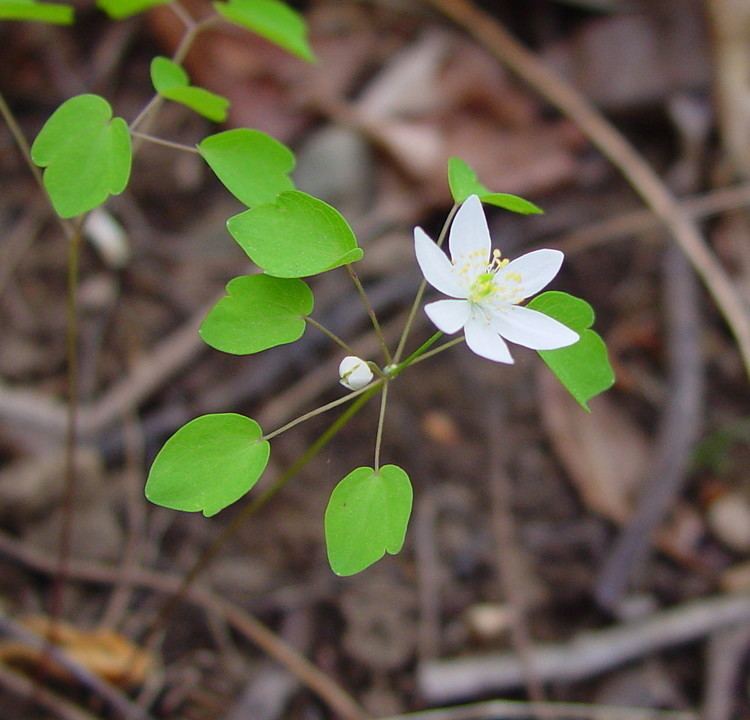
Thalictrum thalictroides is a hairless plant growing from tuberous roots, with upright, 10-to-30 cm (4-to-12 in) tall stems that end with flowers. The basal leaves have petioles (leaf stalks) 10–30 centimetres (4–12 in) long and leaf blades that are two times ternately compound. The leaflets are widely rounded in shape and the ends are three lobed.
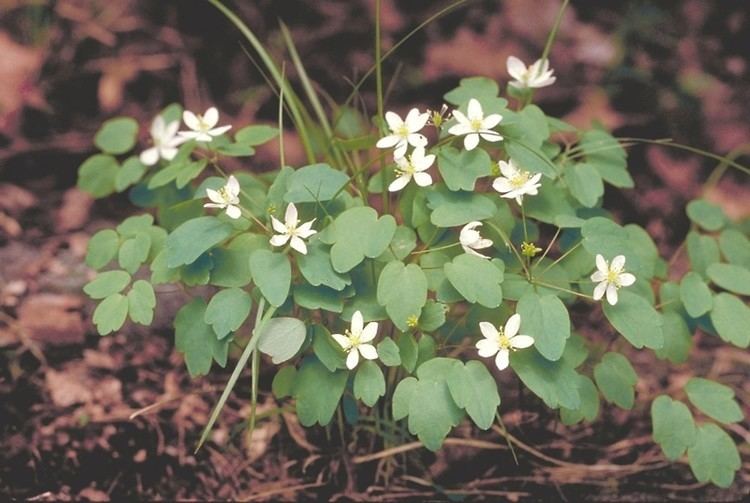
It flowers in spring and the flowers are borne singularly, or in umbel-like inflorescences with 3 to 6 flowers. The flowers have short stems that hold the fully opened flowers above the foliage. The involucral bracts have three leaflets like the leaves. The showy rounded flowers have 4-15 carpels surrounded by many yellow stamens in the middle, and a cup of 5 to 10 white to pinkish-lilac petal-like sepals. The sepals are about 5 to 18 mm (3⁄16 to 11⁄16 in) long and the filaments 3–4 mm (1⁄8–3⁄16 in) long.
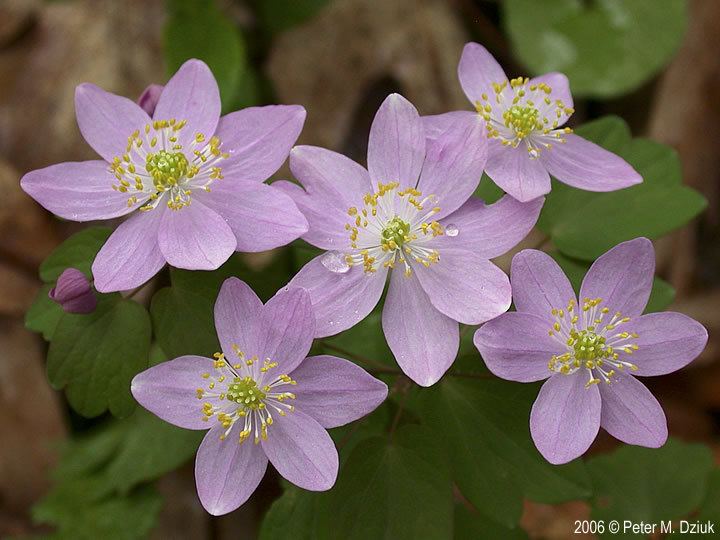
In late spring, 3-to-4.5 mm (1⁄8-to-3⁄16 in) long, ovoid to fusiform shaped fruits called achenes are released. The green achenes have 8 to 10 prominent veins and become dark brown when ripe.
Taxonomy
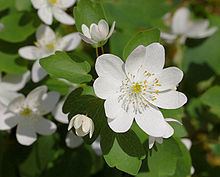
Originally described as Anemone thalictroides by Linnaeus in 1753, it was transferred to a new, monospecific genus, Anemonella, by Édouard Spach in 1839. Although similar to plants in the genus Thalictrum, Sprach considered the diminutive size, umbelliform inflorescence, and tuberous roots of this species to be distinctive enough to designate a new genus. Bernard Boivin considered this distinction suspect, and transferred the species to the genus Thalictrum in 1957. Molecular evidence supports the placement of the species within Thalictrum, and this placement is accepted by several modern treatments, although The Plant List retains it in Anemonella.
